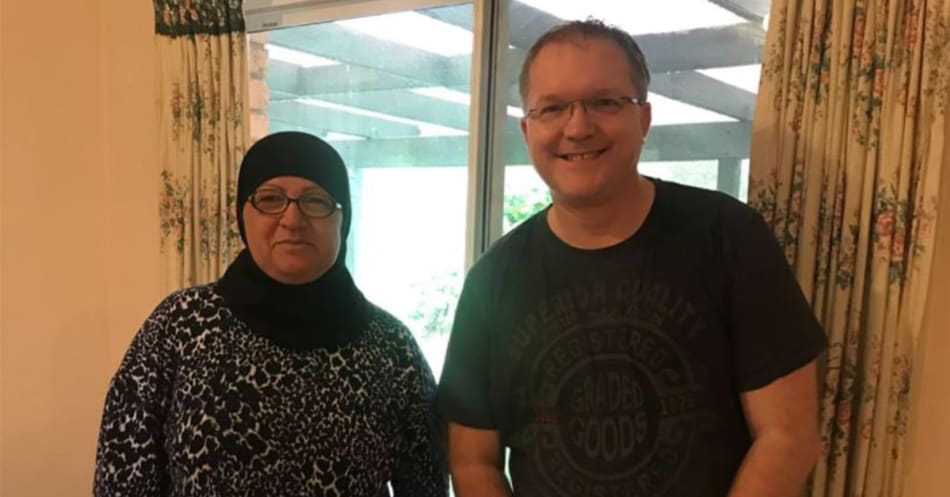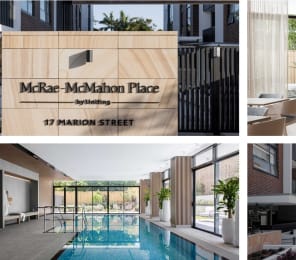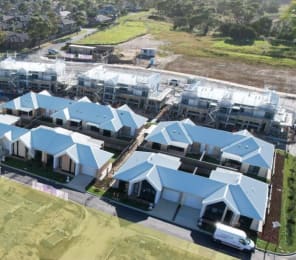The aged care consultant is about to embark on what could prove to be the model for Australia’s future residential care system if the Counsel Assisting recommendations make it into the Royal Commission’s Final Report.
A Registered Nurse with over 30 years’ experience in facility management, governance, human resources and compliance, Rodney (pictured above right) is now moving from the ‘back end’ to establish Community Home Australia, a Not For Profit cottage-style residential aged care provider with community-based overnight care and an activity centre that will offer day therapy for people living with dementia.
He is joined in the venture by Nicole Smith, an aged care adviser and educator who runs the local Community Café for people living with dementia and their carers, and Praveen Gopal, the Deputy Chair for the Ministers Rural & Remote Aged Care Accord who has a background in hospitality and aged care.
No financial backer
Community Home Australia’s first home – named Kamberra House after the Indigenous word for Canberra – will be located in Gordon near Tuggeranong in Canberra’s south and is being bankrolled by $1.1 million from Rodney’s own business Aged Care Consulting and Advisory Services.
Rodney says the decision to not seek funding elsewhere was deliberate.
“I didn’t want to have to answer to banks, churches or another organisation because that’s when aged care becomes murky,” he said. “Everyone wants their pound of flesh. Our purpose is to give that pound of flesh give to the people needing care.”
Care ratios at one to two – NDIS approval but not aged care
The six-bedroom home will accommodate up to six ‘guests’ at a time with multiple kitchens, dining rooms and living spaces and also have a day therapy centre and a childcare centre on the 1,500 sqm site.
They will also offer emergency respite and have a room for couples where one spouse requires more care than the other.
Staffing ratios will be at one carer to two residents during the day and one to three at night, with an RN rostered on daily and a house manager already hired.
While Community Home Australia is seeking NDIS approval to support younger people with dementia who would fall under the NDIS, Rodney says they will not apply for approved provider status – in part because he says the Department of Health would never grant it.
“It’s almost impossible for smaller organisations to do. If you haven’t got 20 million in the bank, they won’t look at you.”
However, Rodney also cites the regulation placed on approved providers as another reason to avoid that path.
“I have dealt with regulatory frameworks for 30 years and that is enough.”
Fees set lower than other group home models
While the model sounds similar to the group home or cottage style models operated by some providers, Rodney says there will be key differences.
The first is price – the home will charge a basic fee of around $450 a day with no additional costs for extra care services, less than the fees usually charged by group home models.
While Rodney acknowledges this is out of the budget for pensioners, he says financial advisers have indicated that this is in the ballpark of what self-funded retirees can afford to pay.
Administration fees will be just 5% thanks to the lean running costs for the home.
“I have been running residential facilities for a long time,” said Rodney. “Now I can do things that I only dreamt of before because the back of house costs was so large.”
“The downside for self-funded retirees going into residential care is that they are getting the same care as everyone else but paying more for it,” he added.
“With this model, you’re paying more but what you’re getting in return is enormous.”
The day therapy centre will also charge around $70 a day including meals but is included in the daily cost for live-in guests.
Just like living at home
Residents will be free to come and go, with a small bus and staff able to accompany them for outings and to attend medical appointments and other daily activities such as shopping and hairdressing.
Meals will be home-cooked on the site or guests will have the option to order from one of the 40 cafes and restaurants that Rodney has made agreements with to deliver food.
“We will make the whole mantra ‘aged care your way’ and we mean it,” he said. “If this is how you want it delivered, we will provide it to you, attempting to have a home where you drive what happens to you.”
Royal Commission backing small home models
It’s a model that would appear to fit well with the shift from institutional residential care to more home-like environments outlined during the Royal Commission – and Rodney says it will not be news to providers that the Commissioners are heading down this path.
“The interesting thing the in sector even though we know that people don’t like residential care, providers keep building bigger and bigger homes,” he said, citing a 100-bed home he recently reviewed where the provider had forgotten to add a lounge room on one of the floors.
“There was no social space except for a tiny dining room because they had got fixated on money and what part brings in money: bedrooms.”
While Rodney says some new aged care homes are “out of this world”, he argues that they are still based on the premise of people living in their bedrooms.
“Residents don’t want to leave their rooms because they don’t want to share space with 80 other people and they don’t want to get abused and assaulted which is what happens in large facilities because everyone is jammed on top of each other.”
Targeting CALD communities and smaller towns
The plan now is to renovate the home to dementia and NDIS guidelines and open their doors early next year – and there is already interest with one person already applying to live at the home once it is complete.
Should the model prove successful, they will then look at targeting CALD communities and smaller towns around Canberra that do not have an aged care home in the community.
“We know we can do it well,” Rodney said. “It won’t appeal to those who want to stay at home, but I think appeal to a significant number in the market that recognise they need more care than home care packages but don’t want to go into institutional care and that’s the middle ground where we fit.”










